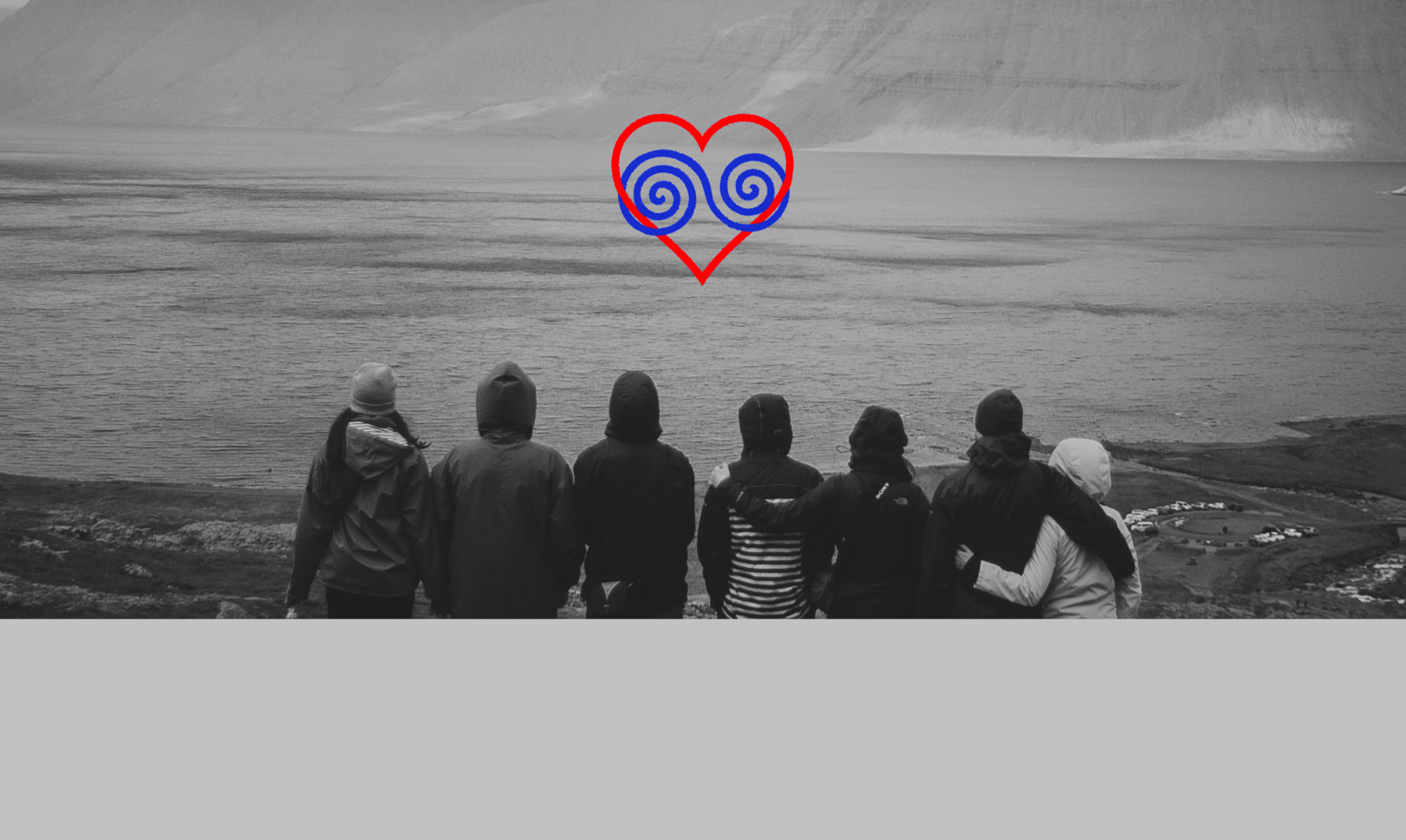Getting naked

What is the reason why many attempts towards more or less successful multiple relationships begin with an initial event of shared sexuality?
Is it because of the pre-emption of the certainty that dwells in our deepest depths that we are all ultimately the result of a sexual encounter between human beings anyway?
Do we therefore want to feel (once again) such connectedness in a tangible way and therefore long for a closeness that literally gets under the skin, for intimacy “in the flesh”?
In this case, (early shared) sexuality might turn out to be of little help, especially if our neediness in terms of connectedness, familiarity and intimacy is rather high (and concerning most people in western industrial nations at the beginning of the 21st century it is quite real – this neediness!). Once released, we therefore quickly behave like starving creatures who are introduced to an exquisitely prepared banquet: We hastily scoop the croutons out of the soup, toss the duchesse potatoes into our insatiable mouth and finally pillage the dessert buffet – because its food is the sweetest and easiest to consume…
Appreciation or even assessability, however, is unlikely to be achieved in this way, regardless of whether food or people are concerned. Something that for example a former acquaintance of mine had to experience painfully, when she was intentionally and surprisingly sprinkled with tealight wax on such a first date, where the participants, in the frenzy of passion, had not verbally exchanged anything about what “jointly shared sexuality” should include for all parties…¹
But even without “surprises” of this kind, the chance is rather small that quick sexuality, as a mutual “compatibility test” in terms of intimacy and closeness, can actually serve this noble purpose. Such (pre-)consummated sexuality will in all probability never really lose its “in-order-to-character” and thus turn into a rather serial “peak episode”, which the author couple Gerrard and French once described in their novel “Killing me softly” ² by quoting a mountaineer with the following statement: “New infatuation is like a mountain First you sacrifice everything and make every effort to climb it somehow. When you finally succeeded, you might try to climb it in a few different ways; then you move on…”.
That’s what I meant by “in-order-to”. Because that way, in the end there may remain some kind of shallow feeling. After all the courtship, after all the passion, after all the intense physical (but certainly also psychological and spiritual closeness and fusion): Was I after all ( just ) an accomplishment, an overcoming in someone else’s calculation? Or was he*she*it in mine?
Somehow we cannot get around Antoine de Saint-Exupéry‘s fox³ and his “becoming familiar with each other” [amply quoted by me in Entries 25, 27, 32, 42 and 52], if our oligoamorous wishes aim at “attachment”, “intimacy” and “predictability”. “Becoming familiar with each other”, that “forgotten” art…
Even the “Little Prince” tries to evade into seriality in the corresponding scene by replying: “But I don’t have much time. I have to make friends and learn many things…!” It is good that the book has become such a mysterious bestseller, though, because the prince nevertheless decides to embark on the experience of “becoming familiar with each other”.
But why, for example, did “The Little Prince” become such an edgy and not easily accessible book in this respect? Why is it almost cryptic in parts, its final twist almost tragic – at least sad, so that many readers often put it back on the shelf with mixed feelings and still return to it again and again in later life?
Probably because the author Saint-Exupéry recognized and expressed that the “becoming familiar with each other” includes a component that early initiated sexuality (I referred to at the beginning) can never accomplish.
Because mutual “familiarity” ( or trust – to which I have already devoted Entries 15, 26, 27 and 43) simply isn’t a “one-way street”. It is even much more than an obvious two-lane road, because a not always visible part of this connection leads directly into our own inner self. I can only really establish familiarity and trust towards “the others” or towards “the world” if I can extend it equally towards myself (Entry 15) or towards “my world” (Entry 26).
But haphazardly (“Oh, let’s just do it and not label in advance where this might lead to…!” ), uncertain (“I don’t really know if I actually want that…” ) or with a hidden agenda (keyword: “peak-episode” ) this won’t work.
In the best case we want to protect ourselves like the „Little Prince“ with an event of early shared sexuality from an alleged loss of elsewhere possibly more usefully invested life time. In the worst case, we thereby avoid possible – and very probable – pain, which we will most likely encounter on every exploratory journey into ourselves in order to build up trust, to “become familiar with ourselves”.
“Oligotropos, did you really just wrote »in the worst case «?”
Yes, I did, because in my view that is the very core of my Entry today. Just as I called the book “The Little Prince” »edgy« and »cryptic«, thus world literature since biblical times has been full of these stories about symbolic or literal quests into our own self. This “quest into ourselves” is thus a human topic towards which we cannot close ourselves off in oligoamorous contexts – and I wrote “in the worst case”, because everything else amounts in my opinion to an active looking away, to ignoring and (self)denial, which will do much more harm to us and our relationships than any unpleasant truth or any old pain we might encounter in ourselves during our introspection.
For it is highly probable that in the confrontation with ourselves we will not only encounter pleasant and harmonious aspects. But how else could we ever face ourselves – and consequently also our loved ones – and commit ourselves if we do not dare to explain who we are? Exactly that means »daring to be someone« which the educationalist Reinhard Kahl and the philosopher Hannah Arendt emphasized in my earlier Entry 39.
“Becoming familiar with each other” and “Becoming familiar with oneself” means to allow each other (and thus ourselves as well) the time to show each other courageous answers to the questions: Who are you? – Who am I?
The fact that these questions are neither to be asked carelessly nor to be answered thoughtlessly is shown by Lana and Lilly Wachowski very significantly in their series “Sense 8“ (Season 2, Episode 2), which was created between 2015 and 2018. When reporters try to trap the protagonists using the tactic of provoking a banal or impossible answer, they respond: “Who am I? Do you mean where I’m from? What I one day might become? What I do? What I’ve done? What I dream? Do you mean … what you see or what I’ve seen? What I fear or what I dream? Do you mean who I love? Do you mean what I’ve lost?”
»Easier«, »more quickly« or »less complex« than these questions (and the answers to them!), an »explanation of yourself« will hardly be possible, if genuine attachment, real intimacy and true predictability are to be the common goal. For all these questions are all aimed at our realness, commonly called “authenticity”. But “authenticity” is not a fashion label or just some pretty lifestyle phrase that a person can merely claim because it smells of sophistication and supposed maturity. “Authentic”, in other words “genuine”, means to impose, entrust, endure and respect what is alive right at this moment, here and now. This also includes human patchwork, unresolved and unsettled elements that aren’t always pleasant or appealing.
Personally, one of the great challenges of ethical multiple relationships in my opinion is to maintain different relationships without compartmentalizing the other parties involved (splitting them into separate features, see also Entries 2 and 44). To achieve this, all those involved need precisely the curiosity and the courage to become acquainted with their “inner diversity”, i.e. their contrasts, their heterogeneity, their irregularities, their bewilderment and their spheres of tension, and to accept that it is also from this diversity that the ingredients emerge which transform a multiple relationship into “more than the sum of its parts”.
Thus, a multiple relationship could, at some point, become a living image of this “choir of our multiple inner voices”, which eventually defines each and every one of us as “us”…
Why is this requirement so important concerning Oligoamory, why is it so essential for this particular form of “multiple relationship with (only) a few participants”?
In Entry 5 I quote my own birth family with the bold expression “Friendship is a wonderful »maybe«, family a wonderful »must-have«!”
Whereas in the series “Sense 8” (Season 1, Episode 8) the character “Wolfgang”, played by actor Max Riemelt, says about a member of his family of choice: “He’s my brother. And not by something as accidental as blood – by something much stronger.” And when asked “What’s that?”, he replies: “By choice!”
Hence, successful relationships with true attachment are much more than a convention (a »must-have«). They are also much more than an option that we can arbitrarily “add” (a »maybe«).
They are conscious choices of volition by which we commit ourselves to each other, precisely because we are aware of the special and unique nature of the connection between ourselves and the other person, in which each of us is allowed to be a whole ” someone “.
It is oligoamorous if we really want that.
¹ Absurd example? I am afraid that all absurd examples seem ridiculous – precisely because they (unfortunately) really happened. And whether this is the most bizarre example in my little box of reminiscences, I don’t even know exactly, because there is also the story of a peanut butter jar, which once was pulled out in the heat of a first date-night…
² Nicci French, “Killing me softly”, Standalone Novels 1998, New edition: Penguin 2008
³ In the 21st chapter of the novel “The Little Prince” by Antoine de Saint-Exupèry the protagonist strikes up a friendship with a fox. The story can be found online HERE.
Thanks to WSNNY on Pixabay for the photo!

